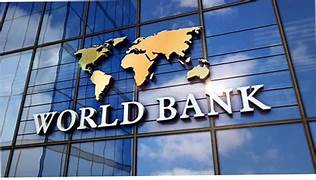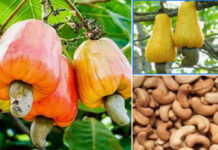The World Bank has announced that it has scaled up its food and nutrition security response.
In May 2022, the World Bank made a commitment of making available $30 billion over a period of 15 months to tackle the crisis. But the Bank said they have surpassed that goal.
It announced that it has scaled up its food and nutrition security response, to now making $45 billion available through a combination of $22 billion in new lending and $23 billion from existing portfolio.
“Our food and nutrition security portfolio now spans across 90 countries. It includes both short term interventions such as expanding social protection, also longer-term resilience such as boosting productivity and climate-smart agriculture.
“The Bank’s intervention is expected to benefit 335 million people, equivalent to 44% of the number of undernourished people. Around 53% of the beneficiaries are women – they are disproportionately more affected by the crisis,” the World Bank said in its latest update to its responses to rising Food Insecurity, published on April 29.
Domestic food price inflation remains high. Inflation higher than 5% is experienced 57.1% of low-income countries (no change since the last update on April 11, 2024), 63.8% of lower-middle-income countries (no change), 33% of upper-middle-income countries (3.0 percentage points lower), and 12.7% of high-income countries (9.1 percentage points lower). In real terms, food price inflation exceeded overall inflation in 48.8% of 166 countries where data is available.
Compared to two weeks ago, the agriculture and cereal price indices closed 1% higher, respectively, and the export price index closed 3% higher. Among cereals, maize and wheat prices closed 2% higher, respectively, while rice closed 1% lower. On a year-on-year basis, maize prices are 34% lower and wheat prices are 17% lower. Rice prices on the other hand are 24% higher. Compared to January 2020, maize prices are 15% higher, wheat prices are 3% higher, and rice prices are 47% higher.
According to the USDA Economic Research Service, global wheat ending stocks for the 2023/24 period are anticipated to hit an eight-year low, dropping 0.6 million metric tons (MMT) to 258.3 million metric tons (MMT). This decline is primarily attributed to India’s diminished wheat stocks, forecasted to decrease by 2.1 MMT to 6.9 MMT due to faster consumption rates than previously estimated. India’s ending stocks will have plummeted by over 20 MMT from their peak in 2020/21, reflecting a substantial reduction. Overall, global stocks have seen a decline of 39 MMT from their peak in 2019/20, with China contributing 18 MMT to this decrease.
According to the latest Global Report on Food Crises (GRFC), nearly 282 million people in 59 countries and territories experienced high levels of acute hunger in 2023 – a worldwide increase of 24 million from the previous year. This rise was due to the report’s increased coverage of food crisis contexts as well as a sharp deterioration in food security, especially in the Gaza Strip and the Sudan. For four consecutive years, the proportion of people facing acute food insecurity has remained persistently high at almost 22 percent of those assessed, significantly exceeding pre-COVID-19 levels. The Global Network Against Food Crises urgently calls for a transformative approach that integrates peace, prevention, and development action alongside at-scale emergency efforts to break the cycle of acute hunger which remains at unacceptably high levels.
According to new research published by the International Food Policy Research Institute (IFPRI), international fertilizer prices have fallen by 50% from their peak in April 2022. Factors such as an increase in demand in the post-COVID economic recovery, disruptions to the global supply chain, Russia’s invasion of Ukraine caused global fertilizer prices to increase significantly from 2021 to 2022. These events raised concerns that fertilizer application would be reduced, which could decrease production and increase food insecurity, but price shocks appear to have had a limited impact on fertilizer use.
As highlighted in a recent IFPRI blog, parts of Southern Africa have been reeling under the grip of a severe drought since late 2023, exacerbated by the ongoing El Niño Southern Oscillation. This has resulted in plummeting harvests; prompted disaster declarations in Malawi, Zambia, and Zimbabwe; and affected countries across the region. Dwindling maize yields pose a grave threat to food security for millions of households reliant on this staple for a significant portion of their daily calorie intake.
Following Russia’s invasion of Ukraine, trade-related policies imposed by countries have surged. The global food crisis has been partially made worse by the growing number of food and fertilizer trade restrictions put in place by countries with a goal of increasing domestic supply and reducing prices. As of April 22, 2024, 16 countries have implemented 22 food export bans, and 8 have implemented 15 export-limiting measures.
Following Russia’s invasion of Ukraine, trade-related policies imposed by countries have surged. The global food crisis has been partially made worse by the growing number of food and fertilizer trade restrictions put in place by countries with a goal of increasing domestic supply and reducing prices. As of April 22, 2024, 16 countries have implemented 22 food export bans, and 8 have implemented 15 export-limiting measures.
World Bank Action
In May 2022, the World Bank made a commitment of making available $30 billion over a period of 15 months to tackle the crisis. We have surpassed that goal. The World Bank has scaled up its food and nutrition security response, to now making $45 billion available through a combination of $22 billion in new lending and $23 billion from existing portfolio.
Our food and nutrition security portfolio now spans across 90 countries. It includes both short term interventions such as expanding social protection, also longer-term resilience such as boosting productivity and climate-smart agriculture.
The Bank’s intervention is expected to benefit 335 million people, equivalent to 44% of the number of undernourished people. Around 53% of the beneficiaries are women – they are disproportionately more affected by the crisis. Some examples include:
- In Honduras, the Rural Competitiveness Project series (COMRURAL II and III) aims to generate entrepreneurship and employment opportunities while promoting a climate-conscious, nutrition-smart strategy in agri-food value chains. To date, the program is benefiting around 6,287 rural small-scale producers (of which 33% are women, 15% youth, and 11% indigenous) of coffee, vegetables, dairy, honey, and other commodities through enhanced market connections and adoption of improved agricultural technologies and has created 6,678 new jobs.
- In Honduras, the Corredor Seco Food Security Project (PROSASUR) strives to enhance food security for impoverished and vulnerable rural households in the country’s Dry Corridor. This project has supported 12,202 extremely vulnerable families through nutrition-smart agricultural subprojects, food security plans, community nutrition plans, and nutrition and hygiene education. Within the beneficiary population, 70% of children under the age of five and their mothers now have a dietary diversity score of at least 4 (i.e., consume at least four food groups).
- A $95 million credit from IDA for the Malawi Agriculture Commercialization Project (AGCOM) to increase commercialization of select agriculture value chain products and to provide immediate and effective response to an eligible crisis or emergency.
- The $200 million IDA grant for Madagascar to strengthen decentralized service delivery, upgrade water supply, restore and protect landscapes, and strengthen the resilience of food and livelihood systems in the drought-prone ‘Grand Sud’.
- A $60 million credit for the Integrated Community Development Project that works with refugees and host communities in four northern provinces of Burundi to improve food and nutrition security, build socio-economic infrastructure, and support micro-enterprise development through a participatory approach.
- The $175 million Sahel Irrigation Initiative Regional Support Project is helping build resilience and boost productivity of agricultural and pastoral activities in Burkina Faso, Chad, Mali, Mauritania, Niger, and Senegal. More than 130,000 farmers and members of pastoral communities are benefiting from small and medium-sized irrigation initiatives. The project is building a portfolio of bankable irrigation investment projects of around 68,000 ha, particularly in medium and large-scale irrigation in the Sahel region.
- Through the $50 million Emergency Food Security Response project, 329,000 smallholder farmers in Central Africa Republic have received seeds, farming tools and training in agricultural and post-harvest techniques to boost crop production and become more resilient to climate and conflict risks.
- The $15 million Guinea Bissau Emergency Food Security Project is helping increase agriculture production and access to food to vulnerable families. Over 72,000 farmers have received drought-resistant and high-yielding seeds, fertilizers, agricultural equipment; and livestock vaccines for the country-wide vaccination program. In addition, 8,000 vulnerable households have received cash transfer to purchase food and tackle food insecurity.
- The $60 million Accelerating the Impact of CGIAR Research for Africa (AICCRA) project has reached nearly 3 million African farmers (39% women) with critical climate smart agriculture tools and information services in partnership with the Consortium of International Agricultural Research Centers (CGIAR). These tools and services are helping farmers to increase production and build resilience in the face of climate crisis. In Mali, studies showed that farmers using recommendations from the AICCRA-supported RiceAdvice had on average 0.9 ton per hectare higher yield and US$320 per hectare higher income.
- The $766 million West Africa Food Systems Resilience Program is working to increase preparedness against food insecurity and improve the resilience of food systems in West Africa. The program is increasing digital advisory services for agriculture and food crisis prevention and management, boosting adaption capacity of agriculture system actors, and investing in regional food market integration and trade to increase food security. An additional $345 million is currently under preparation for Senegal, Sierra Leone and Togo.
- A $150 million grant for the second phase of the Yemen Food Security Response and Resilience Project, which will help address food insecurity, strengthen resilience and protect livelihoods.
- $50 million grant of additional financing for Tajikistan to mitigate food and nutrition insecurity impacts on households and enhance the overall resilience of the agriculture sector.
- A $125 million project in Jordan aims to strengthen the development the agriculture sector by enhancing its climate resilience, increasing competitiveness and inclusion, and ensuring medium- to long-term food security.
- A $300 million project in Bolivia that will contribute to increasing food security, market access and the adoption of climate-smart agricultural practices.
- A $315 million loan to support Chad, Ghana and Sierra Leone to increase their preparedness against food insecurity and to improve the resilience of their food systems.
- A $500 million Emergency Food Security and Resilience Support Project to bolster Egypt’s efforts to ensure that poor and vulnerable households have uninterrupted access to bread, help strengthen the country’s resilience to food crises, and support to reforms that will help improve nutritional outcomes.
- A $130 million loan for Tunisia, seeking to lessen the impact of the Ukraine war by financing vital soft wheat imports and providing emergency support to cover barley imports for dairy production and seeds for smallholder farmers for the upcoming planting season.
In May 2022, the World Bank Group and the G7 Presidency co-convened the Global Alliance for Food Security, which aims to catalyze an immediate and concerted response to the unfolding global hunger crisis. The Alliance has developed the publicly accessible Global Food and Nutrition Security Dashboard, which provides timely information for global and local decision-makers to help improve coordination of the policy and financial response to the food crisis.
The heads of the FAO, IMF, World Bank Group, WFP, and WTO released a Third Joint Statement on February 8, 2023. The statement calls to prevent a worsening of the food and nutrition security crisis, further urgent actions are required to (i) rescue hunger hotspots, (ii) facilitate trade, improve the functioning of markets, and enhance the role of the private sector, and (iii) reform and repurpose harmful subsidies with careful targeting and efficiency. Countries should balance short-term urgent interventions with longer-term resilience efforts as they respond to the crisis.








